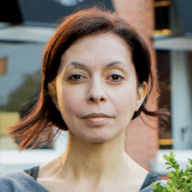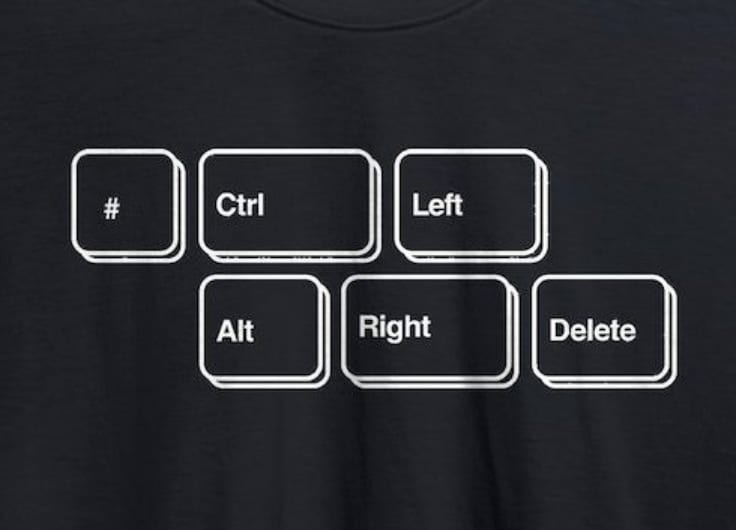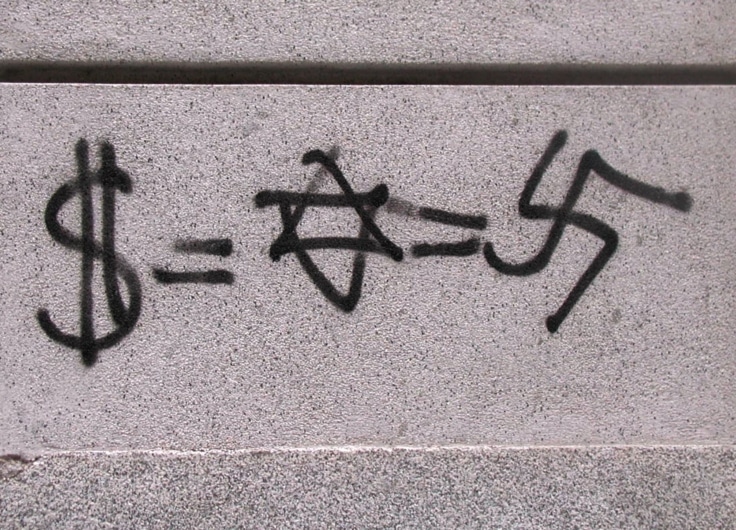How the Flemish and Dutch Far Right Are Planning a ‘Black Wedding’
This fall, Hind Fraihi will dedicate a series of four columns to the issues of ever-increasing social polarisation and the growing distrust of the establishment. In this first instalment, she zooms in on the ultra-right. As it stands, Flemish and Dutch extremists mostly convene in online environments, exchanging stories about conspiracies, dystopia, impurity and existential threat. However, it is clear the Flemish-Dutch front formation intends to develop into much more than an army of keyboard warriors who battle things out on Facebook.
The convoy of cars was reminiscent of a wedding procession, although there was very little to celebrate for those participating. In fact, the participants were ready for action. Ready to speak out against the newly announced Belgian government, the so-called “Vivaldi coalition”, made up of liberals, socialists, greens and Flemish Christian Democrats. Beeping their horns while using the hashtag #notmygovernement – The amount of heavy traffic on our already saturated virtual roads keeps increasing.
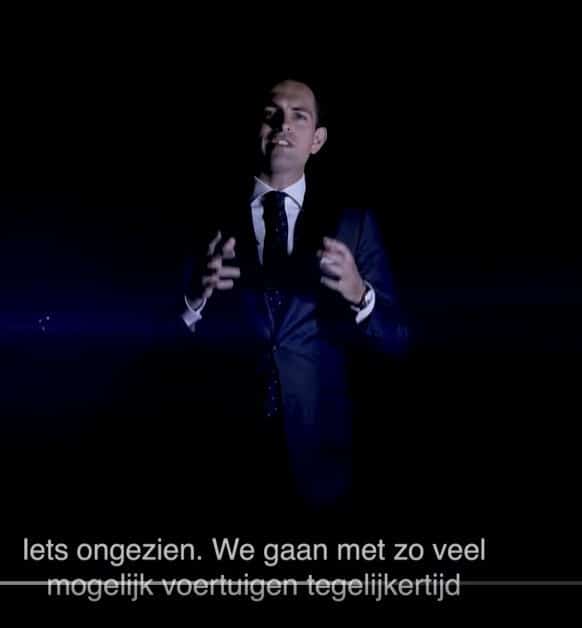 Vlaams Belang party chair Tom Van Grieken (video still)
Vlaams Belang party chair Tom Van Grieken (video still)So, who was the convoy leader? Vlaams Belang (Flemish Interest). The right-wing extremist party had planned a protest drive to Brussels, which resulted in a car meet on Sunday 27 September. ‘This is a deliberate action from every Flemish person who does not agree with this government, regardless of his or her political background. We must all stand shoulder to shoulder and form a united Flemish front,’ Vlaams Belang party chair Tom Van Grieken stated in a video message that was – quite literally – shrouded in darkness.
This Flemish front is not so much standing shoulder to shoulder, but rather bumper to bumper, as no fewer than 5,000 cars took part. On 27 September convoys, decorated with Flemish flags and banners, left various points of departure scattered across all Flemish provinces to meet up near Brussels.
The protest, which some laughed off as a “wedding procession”, is by no means a prank. The procession features a bride and a groom, i.e. Facebook and Vlaams Belang. In July 2020, Vlaams Belang spent no less than 85,700 euros on Facebook ads and related services, e.g. Messenger and Instagram. Spending that amount, the political party takes the lead in Belgium. It even spent a higher amount per Belgian citizen than Democratic presidential candidate Joe Biden did per American at the height of the US election campaign.
Facebook clearly forms the spearhead of Vlaams Belang’s campaign. Where else would Joe or Jane public – the average voter – spend their time other than on the most mainstream of the social media platforms? The thirst for political power must be accompanied by the targeting of the political middle. Parties that are at the extremes of the political spectrum prey greedily on the middle group. This way, Vlaams Belang has a successful crack at mundanity. Not so much on the Twitter forum, where pompous intellectuals gather, or on Instagram, where meticulously groomed influencers tirelessly promote themselves.
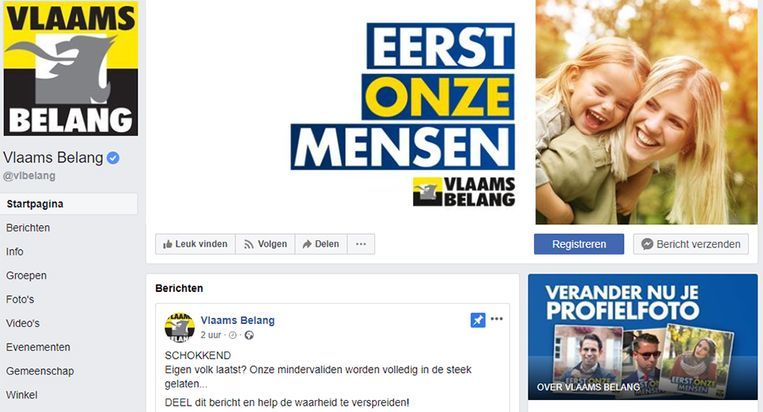 In July 2020, Vlaams Belang spent a higher amount per Belgian citizen than Democratic presidential candidate Joe Biden did per American at the height of the US election campaign.
In July 2020, Vlaams Belang spent a higher amount per Belgian citizen than Democratic presidential candidate Joe Biden did per American at the height of the US election campaign.The Belang has set its sights on the place where friends share BBQ pics. Where feelings are translated into status updates. I feel ‘….’ Go ahead and fill in the blank. And make sure to use an emoji. And where family snaps of communion celebrations are posted. Fully corona-proof, with both nan and grandad on-site.
In their aim to form a diversified cross-section of a brand-new electorate, Van Grieken and his crew have turned Facebook into their digital power centre par excellence. A constituency that has no – or a waning – affinity with the extreme right-wing Flemish-nationalist tradition dating back to World War II, e.g. the Vlaams Nationaal Verbond
(VNV, or Flemish National Alliance). That war generation is quite literally and figuratively dying. Moreover, neo-Nazis prefer to spend their time on other social media networks.
A world war gave way to a series of small wars. Those wars are not waged by drones nor by armed forces, but rather by stories of crisis supported by four pillars: conspiracy thinking, dystopia, impurity and existential threat. In short, this rhetoric of combat implies that the establishment is eyed with a lot of mistrust. In turn, that level of mistrust feeds into conspiracy theories and the fear of the demise of a white, pure Europe, which is currently being defiled by migrants, refuges and Muslims. By postmodernism, seeing wars do not tolerate layered truths. Europe is becoming impure and, therefore, its very essence is under threat. What used to be a geographic threat is turning into an inner one. The logic of parasitism: the unwelcome guest will devour you.
Parties that are at the extremes of the political spectrum prey greedily on the middle group
That gluttony must be met with resistance. For that reason, a front is required. A Flemish one, with or without traffic jams. A front that crosses borders as well. Fraternizing with our fellow Low Countries inhabitants. The days when Pim Fortuyn would not ‘be caught dead next to Filip Dewinter’ are long gone. In September, we were able to witness that alliance between the Dutch Partij voor de Vrijheid (PVV; or Freedom Party), the Forum voor Democratie (FvD, or Forum for Democracy) and the Vlaams Belang in the EU hemicycle. They proposed a motion to denounce the increasing censorship of Zwarte Piet (Black Pete). The character of Sinterklaas’ assistant is said to belong to our ‘inclusive traditional folklore’, and part of the official inventory of the intangible cultural heritage in the Netherlands and Flanders – in other words: protected.
The resolution stands up to the “censorship” of the character of Zwarte Piet by Facebook, a matter on which the extreme right on both the Flemish and Dutch sides of the border firmly agree. In fact, they see eye to eye on numerous other topics, including the support for the Dutch farmers’ protests, which is being shared in both public and private Facebook groups. Furthermore, both sides promote the Pegida Ramadan Tour. ‘The municipality of Eindhoven authorised the Pegida protest in front of the Al Fourqaan mosque on the evening of 6 May. More information to follow soon.’ The Dutch street protests are applauded by the virtual Flemish extreme right by way of likes, shares and comments.
The idea of a Greater Netherlands does not seem buried among some niche extreme right groups
In any event, the Flemish-Dutch front formation aims to move beyond fighting keyboard battles in the Facebook arena. Their adepts are, for instance, called on to join the street protests: ‘Who wants to give a speech at the anti-burqa ban campaign in the Netherlands?’ The Dutch uproar, riots and protests help forge connections with their southern brethren. However, are we witnessing the formation of a band of brothers or the sacred bonds of marriage? Sealed by a look back to 1815-1830, i.e. the brief union of the Netherlands, Belgium and Luxemburg. Greater Netherlands or Dietsland
as a possible way out of this four-part crisis.
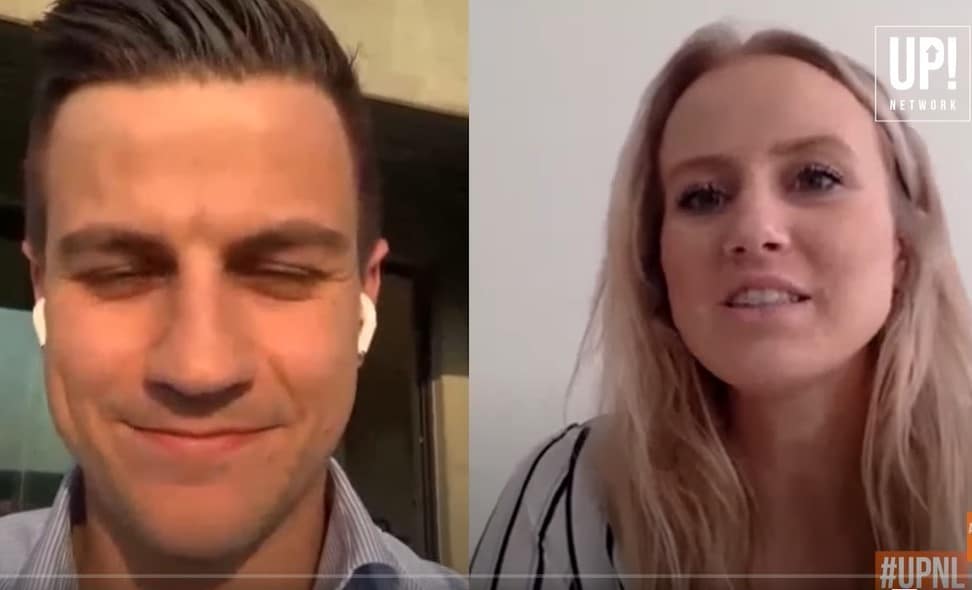 Dries Van Langenhove on YouTube channel UP! Network.NL
Dries Van Langenhove on YouTube channel UP! Network.NLConspiracy thinking, dystopia, impurity and existential threat are fought against on some Facebook profiles under a tricolour flag, featuring orange, blue and white bands, which generally refer to the Diets (or Middle Dutch) union of Flanders and the Netherlands. Is this a pipe dream or a genuine political goal? Dietsland, a country that would be home to all Dutch-speakers: Flanders and the Netherlands, united at last. Geert Wilders raised the issue back in 2008. Provocation – that’s all it was.
Still, the idea of a Greater Netherlands does not seem dead and buried among some niche extreme right groups. ‘I am a staunch believer in increased collaboration between Flanders and the Netherlands. We share the same roots, we belong together,’ according to Dries Van Langenhove (leader of extreme right-wing youth movement Schild & Vrienden ((S&V, or Shield & Friends) and independent member of Vlaams Belang in the Belgian Chamber of Representatives). He expressed this view in an interview on YouTube channel UP! Network.NL, a ‘right-oriented media platform, with a focus on political news and current affairs.’
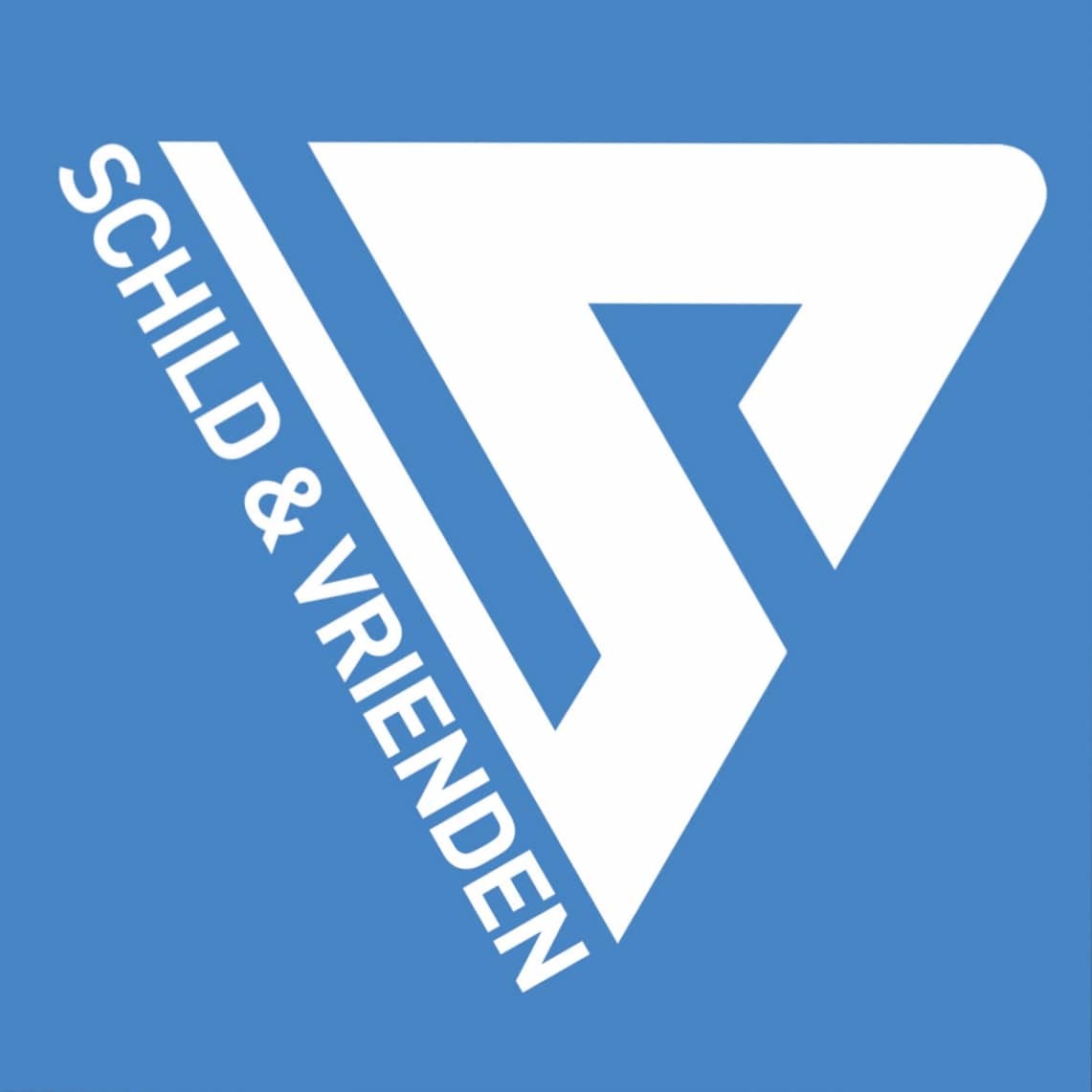 Emblem of the extreme right-wing youth movement Schild & Vrienden
Emblem of the extreme right-wing youth movement Schild & VriendenVan Langenhove asks the rhetorical question: ‘Should the Diets reunion happen overnight?’ His reply? ‘The first logical step is Flemish independence. Only then will we able to determine to what degree we can collaborate with the Netherlands. If we can truly cooperate with one other as equal partners, we might be able to join as one.’ Someday. This sounds like a utopian dream amid a sea of dystopian futures. Van Langenhove is also somewhat pragmatic about it: ‘We should first have an in-depth debate, as most Flemish people are unfamiliar with our shared history.’ He’s not exactly bubbling over with enthusiasm about the idea of expanding Schild & Vrienden to the Netherlands. ‘S&V is all about Flemish identity and Flemish independence. Any Dutch initiative should preferably have Dutch origins and be developed in close collaboration with S&V. In the end, we are one people.’
As it stands, this unity is most noticeable online. At most, this Diets flirtation is akin to a chase that is better than the catch. The big catch in this case is the average voter, lured in with stories of doom and gloom topped with a sprinkle of hope that one day…. First we take Facebook, then the carpool. That which was once laughed off as a wedding procession might actually become the engagement party. Right now, commitments are made for 2024, on the road to a black wedding.

